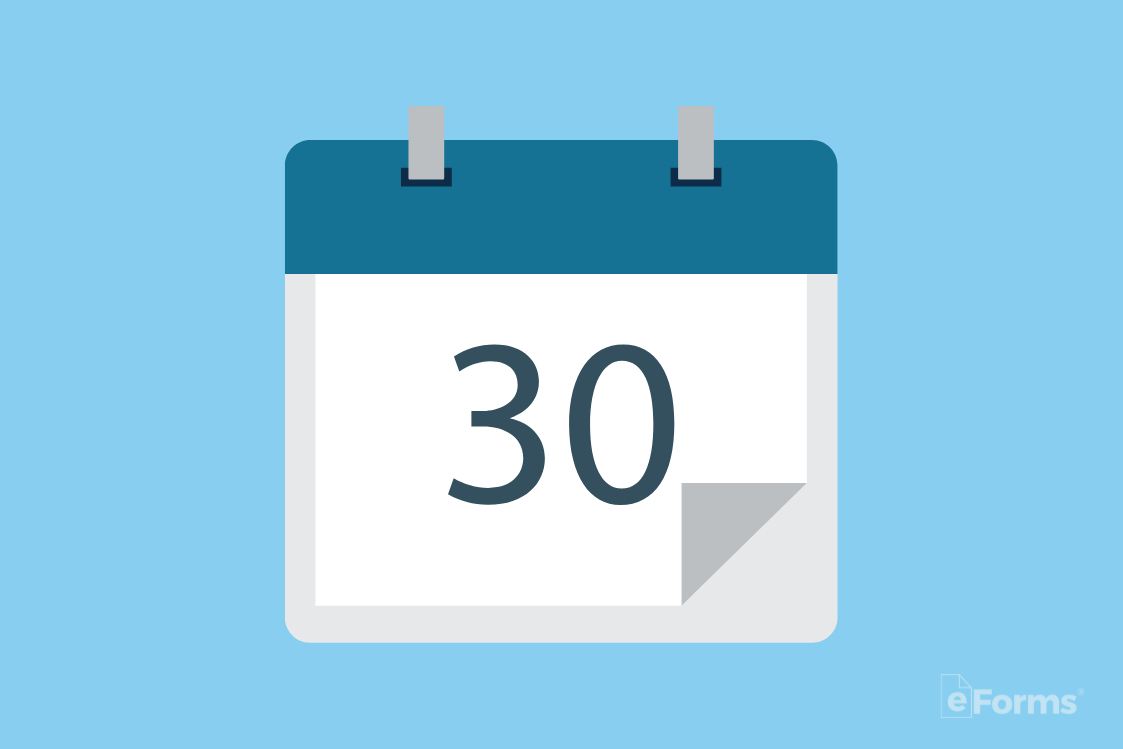Updated February 08, 2024
A Utah marital settlement agreement is a written contract that relays the relationship between spouses following an uncontested divorce. The legally binding document will usually contain terms detailing the division of property and debt, and the payment of child support and alimony. Visitation and child custody, if applicable, can be entered into the form as well. The parties will be required to go over the provisions together, coming to an agreement on all terms before signing at the bottom of the document. It is wise to have legal representation go over the form before the signatures are inscribed. While it is not a legally required document, the settlement agreement can help by serving as a blueprint for the Divorce Decree, enabling the parties to control how their property and responsibilities will be distributed instead of leaving it up to the court.
Table of Contents |
Divorce Laws
Statutes – Title 30, Chapter 3 (Divorce)
Alimony (§ 30-3-5(10)(a)) – In determining the amount and duration of alimony payments, the court will take into account the following:
- Current needs and financial situation of the recipient
- Earning capacity of the recipient
- The impact on the recipient’s earning capacity if made primary child caregiver
- The payor’s ability to support recipient
- The marriage’s length
- Whether recipient has custody of a child requiring support
- Whether recipient worked for the payor
- Whether recipient contributed to the payor’s ability to earn money
The court will also factor in the “fault” of either party in determining alimony (§ 30-3-5(10)(b)). “Fault” means any wrongful conduct that contributed to the breakdown of the marriage (§ 30-3-5(1)(b)).
Alimony Calculator – divorceutah.com
Child Support (§ 78B-12) – The court will use this table to determine the amount of child support both parents are required to supply. The calculation is based on the combined gross monthly income of both parents, and the obligation of each individual will be based on the percentage that they contribute to the total amount.
Child Support Calculator – staceyschmidtlawfirm.com or orscsc.dhs.utah.gov
Division of Property (§ 30-3-5(2) and § 30-3-5(3)) – In Utah, the court divides the marital property as they deem fair, not necessarily equal. This is because the state follows the principles of equitable distribution as opposed to community property law.
Grounds for Divorce (§ 30-3-1(3)) – In Utah, the following constitutes grounds for divorce:
- Impotency
- Adultery
- Willful desertion of over one (1) year
- Willful neglect
- Continual alcohol abuse
- Conviction of a felony
- Abuse affecting mental or physical health
- Irreconcilable differences of the marriage
- Incurable insanity
- Parties have lived apart under a decree of separate maintenance for three (3) consecutive years without cohabitation
Interim Support (§ 30-3-3(3)) – During the course of the divorce process, the court may have one (1) of the parties supply the other with temporary alimony (maintenance) or child support as is necessary to preserve a sufficient quality of life until a ruling is made.
Residency (§ 30-3-1(2)) – A couple may divorce if either party has been a resident of Utah and of the county they’re filing in for at least three (3) months.
Divorce Forms
- Where to File – District Court
- Filing Fee – $325 (§ 78A-2-301(1)(b)(iv))
- How Long Does it Take? At least thirty (30) days (§ 30-3-18(1))
Uncontested Divorce with No Children:
-
- Petition for Divorce (available through the OCAP*)
- Domestic Relations Injunction
- Motion to Waive Fees and Statement Supporting Motion
- Stipulation (available through the OCAP*)
- Certificate of Divorce, Dissolution of Marriage, or Annulment
- Divorce Decree (available at courthouse)
Uncontested Divorce With Children:
-
-
- Petition for Divorce (available through the OCAP*)
-
-
- Stipulation (available through the OCAP*)
- Notice of Education Requirements
- Motion to Waive Education Requirements
- Parenting Plan
- Income Verification and Compliance with Child Support Guidelines
- Divorce Decree (available at courthouse)
The below instructions are for an uncontested, stipulated divorce case. This type of case means that all parties agree to all aspects of the divorce going into the filing and legal process. The steps required are different from those of a contested divorce, or a divorce by default (see Utah guide here).
How to File for Divorce in Utah (7 steps)
- Petition for Divorce
- Stipulation and Marital Settlement Agreement
- Parenting Plan
- Parenting Classes
- Waiting Period
- Final Forms and Divorce Decree
- Name Change
1. Petition for Divorce
 To start the divorce case, one (1) spouse (the petitioner) will need to file the Petition for Divorce with the District Court in the jurisdiction in which they or the other spouse has resided for at least three (3) months. The petition can only be completed online, using the Online Court Assistance Program (OCAP). Users will have to create an account, log in, and go through the series of questions to complete the petition. The form can then be printed, signed, and filed at the courthouse where the petitioner will pay the $325 filing fee. The petitioner can attempt to waive the fee, if they are unable to afford it, by filing a Motion to Waive Fees and Statement Supporting Motion. Along with the petition, the filer will need to submit the Certificate of Divorce, Dissolution of Marriage, or Annulment for the Utah Department of Health.
To start the divorce case, one (1) spouse (the petitioner) will need to file the Petition for Divorce with the District Court in the jurisdiction in which they or the other spouse has resided for at least three (3) months. The petition can only be completed online, using the Online Court Assistance Program (OCAP). Users will have to create an account, log in, and go through the series of questions to complete the petition. The form can then be printed, signed, and filed at the courthouse where the petitioner will pay the $325 filing fee. The petitioner can attempt to waive the fee, if they are unable to afford it, by filing a Motion to Waive Fees and Statement Supporting Motion. Along with the petition, the filer will need to submit the Certificate of Divorce, Dissolution of Marriage, or Annulment for the Utah Department of Health.
The court, once the petition is filed, will automatically issue a Domestic Relations Injunction that will be effective on the petitioner upon filing, and on the respondent (the other spouse) once it’s delivered to them.
2. Stipulation and Marital Settlement Agreement
Because the case is a stipulated divorce, the parties need not go through the service process that would have the petitioner serving a summons and copy of the filed petition on the respondent. Instead, they can use the OCAP to create a Stipulation that conveys that the respondent agrees to all the information on the petition and in the Divorce Decree. This stipulation should be reviewed thoroughly, printed, and signed by the parties before it is filed with the court.All matters related to the division of property, child support payments, and alimony payments can be drafted in a Marital Settlement Agreement. The drafting of this document can be accomplished at any point leading up to the final hearing. The agreement will be reviewed by the judge, and the provisions therein will be altered if necessary and inscribed in the final Divorce Decree. This is not a required document, but can be a useful organization tool and may include provisions not entered into the stipulation.
3. Parenting Plan
 The spouses, if they plan on having joint custody of their children, will be required to create a Parenting Plan. This is another form that can be completed through the OCAP. The form goes into detail as to how parenting time will be divided between spouses. In divorces that aren’t stipulated, the parties would file their respective plans and the judge would decide what they deem is the best arrangement. However, since all parties agree in this case, the document should be drafted jointly and filed with the court once verification is signed by both parties.
The spouses, if they plan on having joint custody of their children, will be required to create a Parenting Plan. This is another form that can be completed through the OCAP. The form goes into detail as to how parenting time will be divided between spouses. In divorces that aren’t stipulated, the parties would file their respective plans and the judge would decide what they deem is the best arrangement. However, since all parties agree in this case, the document should be drafted jointly and filed with the court once verification is signed by both parties.
4. Parenting Classes
5. Waiting Period
 In Utah, there is a thirty-day (30) waiting period between the filing of the petition and the final hearing. The couple can attempt to waive this period through a Motion to Waive 30-day Divorce Waiting Period. The court will only allow for a reduced duration in extenuating circumstances.
In Utah, there is a thirty-day (30) waiting period between the filing of the petition and the final hearing. The couple can attempt to waive this period through a Motion to Waive 30-day Divorce Waiting Period. The court will only allow for a reduced duration in extenuating circumstances.


